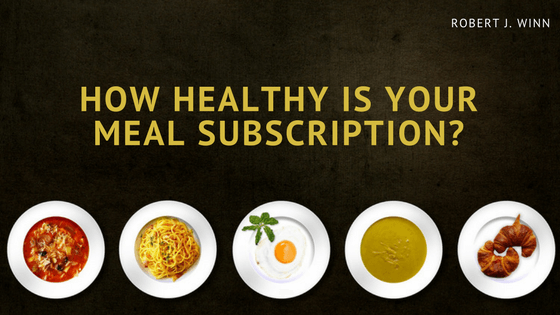Meal subscription services are all the rage – and why wouldn’t they be? These pay-by-week packages offer clients the opportunity and tools to prepare dishes that wouldn’t look out of place on a upscale restaurant’s menu in the relaxation of their own kitchens. Many are even specialized to appeal to niche audiences; Purple Carrot, for example, offers a plant-based diet, while Blue Apron offers a rotating menu of seasonal farm-to-table recipes. The sales pitch sounds deliciously appealing to say the least – but will services like these actually improve your nutritional health? The answer depends on you.
What is your definition of a “healthy” diet? Are you trying to lose weight, eat whole foods, or just tuck a few more vegetables into your weekly menu? Generally speaking, mainstream subscription services like the two mentioned above are not intended to function as a “diet” – or even a health service. For instance, someone looking to cut down on carbs and salts might not be helping their diet along by opting for Blue Apron’s Stovetop Chicken Parmesan with Spaghetti and Kale. That said, Blue Apron does allow members to pick and choose from a select list of recipes based on their dietary preferences. But even this requires the user to think critically about their nutritional choices and make decisions for themselves. Subscription services may cut down on the time and hassle spent at the grocery store and provide you with the resources you need to cook a balanced meal, but they won’t make your nutritional decisions for you.
Moreover, it is important to note that signing onto a subscription service doesn’t give you an automatic free pass on meal planning and shopping. Odds are, you’re still going to have to make a trip through the grocery store to find food for lunches, breakfasts, snacks, and, shockingly, dinners. That’s right – even if Blue Apron delivers a box to your doorstop every week, you might find yourself eating boxed macaroni and cheese after work. Blue Apron offers three-meal plans at a two-person rate and four-person “family” rate; theoretically, you could buy the two-person plan and have pre-planned meals for six days out of the week. This would, of course, leave you on your own for breakfast and lunch. This is where it gets tricky; after all, if you start your day with a heaping bowl of sugar-heavy Cocoa Puffs, will eating a curated Blue Apron dinner redeem your unhealthy taste in cereal? Probably not. If you want to buy a meal subscription as a way to eat healthfully, more power to you – but you can’t rely on the service to boost your health without help. You need to walk the grocery store with health in mind, and plan lunch and breakfast options that fit within your idea of a “healthy” diet.
The last point to consider is price. Meal subscriptions can be great: they offer delicious recipes, fresh ingredients, and easy delivery. But the flavors and convenience of a subscription meal does come at a steep monetary cost. The two-person Blue Apron plan mentioned above costs $59.94 per week. When added up over a month, that bill comes to $240 per month – and that isn’t even taking into account the expenses incurred for buying lunch, breakfast, and snack ingredients for the grocery store. If you have the means to afford it, Blue Apron might be a great addition to your regular diet. But if you’re on a budget, you might want to steer clear.

